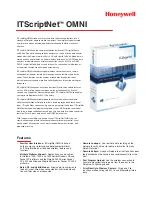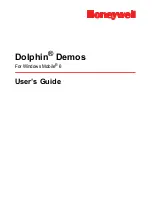
A-4
I
NSTALLING
I
NTEL
T
ELEPHONY
C
OMPONENTS
Voice resources on E1 CAS boards can be used as shared voice resources only if you
disable the E1 trunk resources on the board. For more information, see “Disabling Intel
Dialogic devices” in Appendix J in Installing TeleVantage.
Q
DM/V160-LS trunks.
Trunk and voice resources on this board behave in the same way
as E1 CAS trunks.
Dedicated station voice resources
DM3 analog station boards have dedicated voice resources which TeleVantage uses for ADSI
and CLASS features. These voice resources cannot be used for other per-physical station
functions such as playing prompts or listening for digits.
Making dedicated voice resources shared
Non-DM3 analog trunk boards have dedicated voice resources, one voice resource for each
analog trunk. You can make a dedicated voice resource on an analog trunk board shared by not
connecting a phone company trunk line to the port on the board
Viewing voice resource performance counters
The TeleVantage Server automatically tracks voice resource usage statistics via performance
counters that you can view using the
performance monitoring utility included with Windows.
For
more information, see “Viewing TeleVantage performance counters” in Chapter 12 in
Administering TeleVantage.
Maximum possible voice resource use
TeleVantage needs enough voice resources to handle the peak expected voice resource load on
the system.
The theoretical maximum peak load—with system call recording turned off—occurs when all
trunks and all stations each require a voice resource at the same time. For example, on an 8-trunk
by 8-station system, the maximum number of voice resources required is 16 voice resources on
an Intel board or 16 Intel HMP voice resources. With system call recording turned on, there are
8 possible calls, so the number of voice resources required increases to 24, requiring 8 additional
board-based voice resources, or 8 more Intel HMP voice resources.
However, actual peak loads are much less. For example, a board that provides 8 trunks can
usually support up to 16 stations, since all stations will typically not be be on active calls
simultaneously.
Conserving voice resources
As described above, some situations—using system call recording to record all calls, sending
message-waiting information to CLASS phones, and paging to ADSI phones—can consume
many voice resources. You can use the TeleVantage Advanced Settings Editor to tune
TeleVantage to conserve some voice resources for other purposes, ensuring that users can get
dial tone and answer calls. For more information, see the various Server\Vox system database
settings documented in Section “Modifying other supported TV settings” in Appendix J in
Installing TeleVantage.
Summary of Contents for TeleVantage 7.5
Page 1: ...INSTALLING INTEL TELEPHONY COMPONENTS TELEVANTAGE 7 5 ...
Page 2: ......
Page 4: ......
Page 14: ......
Page 15: ...Section 1 Preparing for Installation ...
Page 16: ......
Page 30: ......
Page 31: ...Section 2 Installing Intel HMP ...
Page 32: ......
Page 50: ......
Page 51: ...Section 3 Installing Intel Boards and Drivers ...
Page 52: ......
Page 72: ......
Page 116: ......
Page 117: ...Appendixes ...
Page 118: ......
Page 126: ......
Page 154: ......
Page 174: ......
Page 180: ......
















































